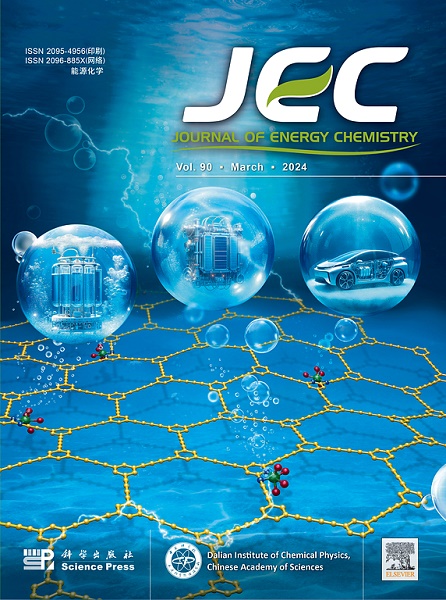Atomistic simulation of batteries via machine learning force fields: from bulk to interface
IF 13.1
1区 化学
Q1 Energy
引用次数: 0
Abstract
Batteries play a critical role in electric vehicles and distributed energy generation. With the growing demand for energy storage solutions, new battery materials and systems are continually being developed. In this process, molecular dynamics (MD) simulations can reveal the microscopic mechanisms of battery processes, thereby boosting the design of batteries. Compared to other MD simulation techniques, the machine learning force field (MLFF) holds the advantages of first-principles accuracy along with large spatial and temporal scale, offering opportunities to uncover new mechanisms in battery systems. This review presents a detailed overview of the fundamental principles and model types of MLFFs, as well as their applications in simulating the structure, transport properties, and chemical reaction properties of bulk battery materials and interfaces. Notably, we emphasize the long-range interaction corrections and constant-potential methods in the model design of MLFFs. Finally, we discuss the challenges and prospects of applying MLFF models in the research of batteries.

通过机器学习力场的电池原子模拟:从体积到界面
电池在电动汽车和分布式发电中起着至关重要的作用。随着对储能解决方案的需求不断增长,新的电池材料和系统不断被开发出来。在此过程中,分子动力学(MD)模拟可以揭示电池过程的微观机制,从而促进电池的设计。与其他MD模拟技术相比,机器学习力场(MLFF)具有第一性原理精度以及大空间和时间尺度的优势,为揭示电池系统中的新机制提供了机会。本文详细介绍了MLFFs的基本原理和模型类型,以及它们在模拟大块电池材料和界面的结构、输运性质和化学反应性质方面的应用。值得注意的是,我们在MLFFs模型设计中强调了远程相互作用修正和恒势方法。最后,讨论了MLFF模型在电池研究中的应用所面临的挑战和前景。
本文章由计算机程序翻译,如有差异,请以英文原文为准。
求助全文
约1分钟内获得全文
求助全文
来源期刊

Journal of Energy Chemistry
CHEMISTRY, APPLIED-CHEMISTRY, PHYSICAL
CiteScore
19.10
自引率
8.40%
发文量
3631
审稿时长
15 days
期刊介绍:
The Journal of Energy Chemistry, the official publication of Science Press and the Dalian Institute of Chemical Physics, Chinese Academy of Sciences, serves as a platform for reporting creative research and innovative applications in energy chemistry. It mainly reports on creative researches and innovative applications of chemical conversions of fossil energy, carbon dioxide, electrochemical energy and hydrogen energy, as well as the conversions of biomass and solar energy related with chemical issues to promote academic exchanges in the field of energy chemistry and to accelerate the exploration, research and development of energy science and technologies.
This journal focuses on original research papers covering various topics within energy chemistry worldwide, including:
Optimized utilization of fossil energy
Hydrogen energy
Conversion and storage of electrochemical energy
Capture, storage, and chemical conversion of carbon dioxide
Materials and nanotechnologies for energy conversion and storage
Chemistry in biomass conversion
Chemistry in the utilization of solar energy
 求助内容:
求助内容: 应助结果提醒方式:
应助结果提醒方式:


